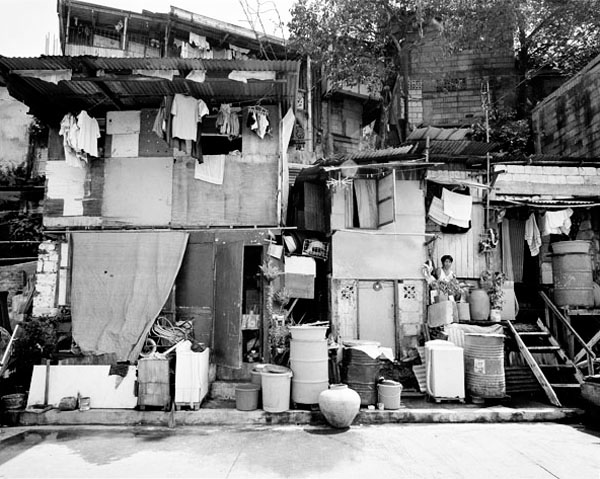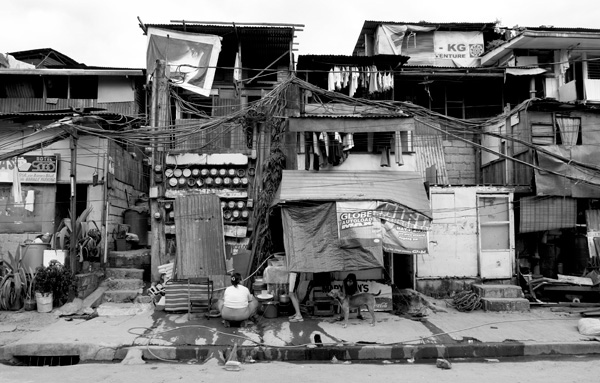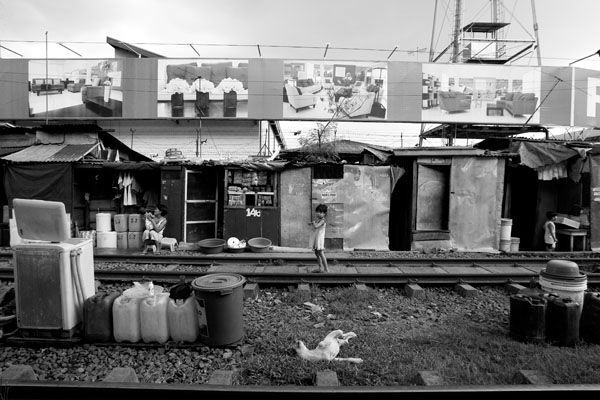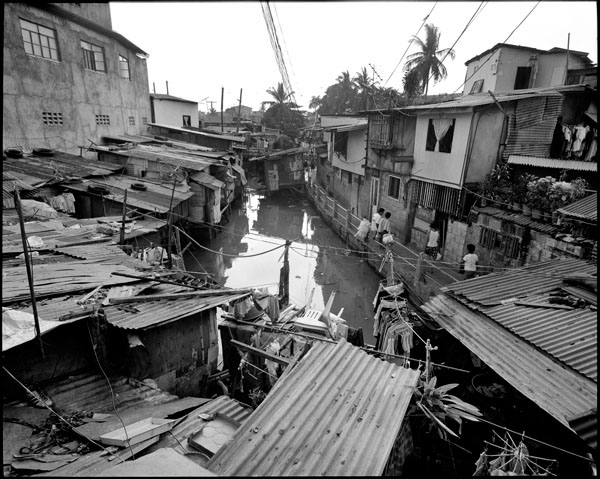Neal Oshima: Squatter Settlements in Metro Manila
 "These photographs were made over the past five years as part of a survey of the architecture of informal settlements in Metro Manila. The study had city planning, architectural and economic components and resulted in the soon to be published Lungsod Iskwater, The Evolution of Informality as a Dominant Pattern in Philippine Cities, by Alcazaren, Ferrer and Icamina. The survey grew out of a comment by the Cuban-American urban planner, Andres Duany, who, in a lecture about the metropolis, noted that the solutions for Manila’s myriad urban problems would more likely come from the squatter settlements than from the exclusive enclaves that Manila’s elite inhabit." Neal Oshima: Urban Landscapes
"These photographs were made over the past five years as part of a survey of the architecture of informal settlements in Metro Manila. The study had city planning, architectural and economic components and resulted in the soon to be published Lungsod Iskwater, The Evolution of Informality as a Dominant Pattern in Philippine Cities, by Alcazaren, Ferrer and Icamina. The survey grew out of a comment by the Cuban-American urban planner, Andres Duany, who, in a lecture about the metropolis, noted that the solutions for Manila’s myriad urban problems would more likely come from the squatter settlements than from the exclusive enclaves that Manila’s elite inhabit." Neal Oshima: Urban Landscapes "As I made these photographs I was struck by the contrast between the trepidation that non-squatter residents would express about their neighbors and the whole-hearted welcome that the settlement residents would greet me with when I asked to photograph their homes. I came to realize that most of the squatters were there by choice. More often than not, they paid rent to someone who had connections with local authorities, were building on tiny plots of untitled, marginally-habitable land and had made a carefully considered choice to live on the edges of what was legal and prudent. I found that invariably, they had created communities that were self-governing and humane, pockets of sanity in a city of three hour a day commutes through blinding pollution in the chaos that is Metro Manila."
"As I made these photographs I was struck by the contrast between the trepidation that non-squatter residents would express about their neighbors and the whole-hearted welcome that the settlement residents would greet me with when I asked to photograph their homes. I came to realize that most of the squatters were there by choice. More often than not, they paid rent to someone who had connections with local authorities, were building on tiny plots of untitled, marginally-habitable land and had made a carefully considered choice to live on the edges of what was legal and prudent. I found that invariably, they had created communities that were self-governing and humane, pockets of sanity in a city of three hour a day commutes through blinding pollution in the chaos that is Metro Manila." "Informal settlers face the same urban problems as others in the city, of course, with the added dangers of violent eviction, sweeping fires that can raze entire communities in minutes, institutionalized crime, and sanitation problems characteristic of an urban sink. On the other hand, in many communities I visited, shoes and sandals are left out on the doorstep without fear of theft, and young children play without danger, supervised by all neighboring adults. I found that people were highly aware of and genuinely concerned about their neighbors, expressing a sense of cooperation and tolerance that is often rare in formal communities. In addition, I found that the architectural solutions were often surprising in their use of materials and space, often redefining the limits of human habitation."
"Informal settlers face the same urban problems as others in the city, of course, with the added dangers of violent eviction, sweeping fires that can raze entire communities in minutes, institutionalized crime, and sanitation problems characteristic of an urban sink. On the other hand, in many communities I visited, shoes and sandals are left out on the doorstep without fear of theft, and young children play without danger, supervised by all neighboring adults. I found that people were highly aware of and genuinely concerned about their neighbors, expressing a sense of cooperation and tolerance that is often rare in formal communities. In addition, I found that the architectural solutions were often surprising in their use of materials and space, often redefining the limits of human habitation."  "It is not my intention to romanticize life in these communities—by any standard, it is a tough, hand-to-mouth existence every single day: tiny, flimsy, untitled dwellings constructed of discarded materials, without proper water, sewage or electrical connections, alongside fetid drainage canals or an arm’s length away from raging commuter trains. Yet, as we become increasingly aware of the damage we, as a species, have done to the planet and as the prospects of long-term human survival dim, I wonder if these photos aren’t an optimistic glimmer of the future of the human species on earth. "
"It is not my intention to romanticize life in these communities—by any standard, it is a tough, hand-to-mouth existence every single day: tiny, flimsy, untitled dwellings constructed of discarded materials, without proper water, sewage or electrical connections, alongside fetid drainage canals or an arm’s length away from raging commuter trains. Yet, as we become increasingly aware of the damage we, as a species, have done to the planet and as the prospects of long-term human survival dim, I wonder if these photos aren’t an optimistic glimmer of the future of the human species on earth. "
-Neal Oshima
October 2006
2 comments:
Hello. This post is likeable, and your blog is very interesting, congratulations :-). I will add in my blogroll =). If possible gives a last there on my blog, it is about the Flores Online, I hope you enjoy. The address is http://flores-on-line.blogspot.com. A hug.
Approvingly your article helped me very much in my college assignment. Hats high to you dispatch, wish look forward for more interdependent articles without delay as its one of my choice topic to read.
Post a Comment